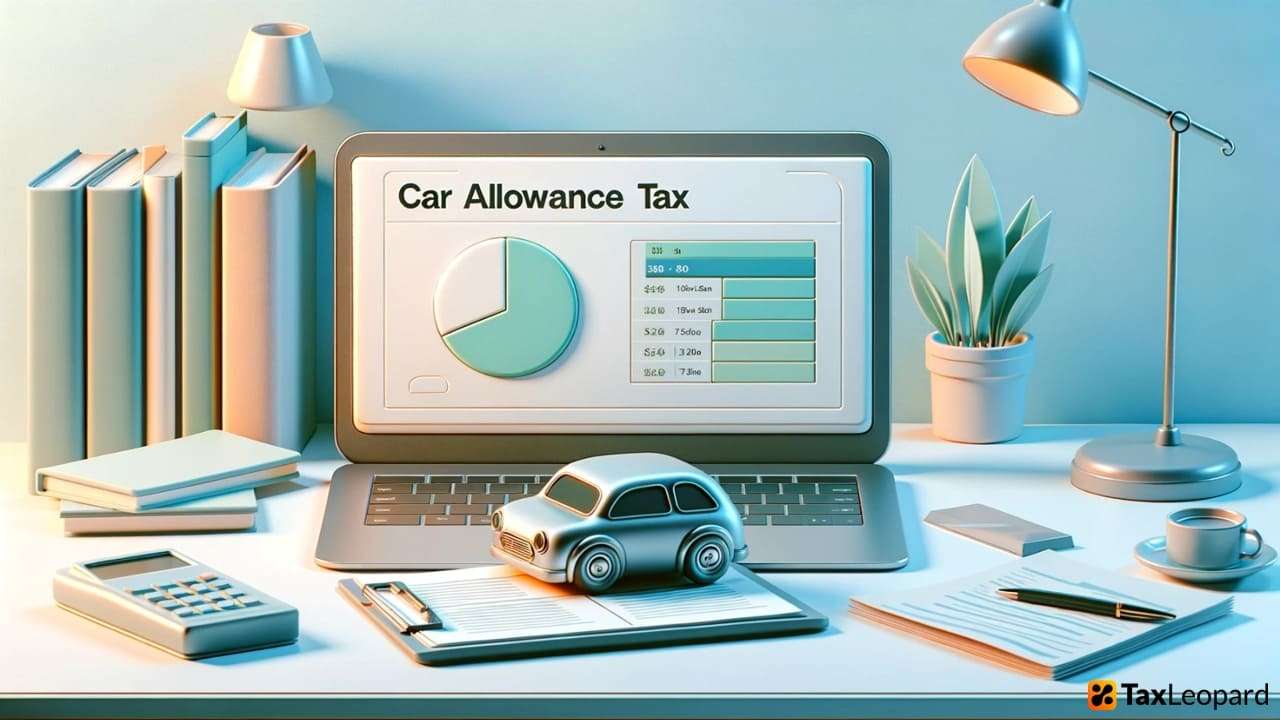Navigating the complexities of car allowance tax in Australia for 2024 can feel like a maze with ever-changing rules. Recent changes to the tax legislation have made it challenging for both employers and employees to stay compliant. Research indicates a significant number of Australian workers are unaware of how these changes affect their tax liabilities. This knowledge gap can lead to unexpected tax bills or missed opportunities for savings. Our comprehensive guide simplifies the latest regulations surrounding car allowance tax in 2024. We provide clear, actionable insights to help you maximise benefits and remain compliant, ensuring you are well-prepared for this financial year.
Importance of understanding car allowance tax
Understanding car allowance tax is crucial, especially when considering the tax implications of car expenses. The Australian Taxation Office (ATO) mandates strict guidelines on what constitutes a taxable car allowance. In 2023, the ATO set specific cents per kilometre rates, impacting how allowances are taxed. Being informed about these rates is essential for both employers and employees.
For business purposes, knowing the per-kilometre allowance and how it affects deductions can lead to significant tax savings. Additionally, awareness of the rules around motor vehicle expenses ensures compliance with ATO requirements. Therefore, grasping the nuances of car allowance tax is not just beneficial, but imperative.
What is a Car Allowance?
Employers make a car allowance payment to employees for the use of their personal vehicle for work-related activities. This allowance is designed to cover the costs associated with the business use of a vehicle, such as fuel and maintenance. The allowance is usually calculated based on a per-kilometer rate, which is determined by the ATO.
In 2023, for instance, the ATO set a specific cents per kilometre rate for these allowances. Employees need to maintain a log book and keep detailed records of their vehicle use, as this information is necessary to claim a deduction on their taxes.
Car allowances provide flexibility for employees, allowing them to choose their own vehicle and potentially save on lease costs, while also being a taxable component of their income.
Car Allowance Tax Rules in Australia for 2024
In 2024, the landscape of car allowance tax rules in Australia will see some specific updates and continuations of general tax practices. Understanding these rules is crucial for both employees and employers to ensure compliance and optimal tax benefits.
General tax rules
- Car Allowance as Taxable Income: Car allowances in Australia are typically considered taxable income. This means they need to be reported to the Australian Taxation Office (ATO) during tax filings.
- Claiming Deductions: Employees who receive a car allowance can claim deductions for their car expenses. These deductions are meant to cover the costs incurred when using a personal vehicle for work-related purposes. You can calculate the deductions using one of the methods sanctioned by the ATO, such as the cents per kilometre method or the logbook method.
- Record-Keeping Requirements: For claiming deductions, it’s essential to maintain accurate records. The ATO requires documentation that substantiates the business use of a vehicle. This could include logbooks or diary entries that detail the work-related journeys undertaken.
Specific changes for 2024
- Updated Cents per Kilometre Rate: One of the significant changes in 2024 is the update in the cents per kilometre rate. The ATO has set this rate at 85 cents per kilometre for the 2023-2024 financial year. This rate is a crucial figure for calculating car expense deductions under the cents per kilometre method.
- Maximum Kilometre Cap: The cents per kilometre method allows taxpayers to claim a maximum of 5,000 business kilometres per car, per year. This cap remains consistent, ensuring that claims are within reasonable limits.
- Coverage of Vehicle Expenses: The cents per kilometre rate is designed to encompass all vehicle running costs. This includes not just the obvious expenses like fuel and servicing but also accounts for depreciation, registration, and insurance costs.
These rules and changes reflect the ATO’s ongoing efforts to streamline tax processes and ensure fair taxation practices. Individuals and businesses need to stay updated with these rules to manage car allowances effectively and remain compliant with tax regulations.
Calculating Car Allowance Tax
Methods of calculation:
- Cents Per Kilometre Method: This simple approach calculates your allowance based on the business kilometres driven, up to a set limit.
- Log Book Method: Starting from 1 July 2022, this method requires maintaining a logbook for a continuous period of at least 12 weeks to determine the business portion of vehicle expenses.
- Salary Packaging: Often used with novated leases or chattel mortgages, this method involves salary sacrificing to cover the costs of running a vehicle.
- Actual Cost Method: This method accounts for the actual expenses of using your car for work, such as fuel, maintenance, and depreciation.
Car Allowance Work: Balancing Benefits for Employees and Employers
For Employees:
- “Using your car for work purposes can maximize the car allowance from your employer.”
- “Claim a deduction on your tax return for work-related car expenses.”
- “With a car allowance, you may be able to claim cents per kilometre.”
- “Receive a car allowance and use it towards running a vehicle for work.”
- “Salary sacrificing for a car allowance can reduce your taxable income.”
For Employers:
- “Offering a car allowance can be an attractive perk for using their car for work.”
- “Employers can negotiate car allowances as part of a salary package.”
- “Providing a vehicle allowance can reduce the need for a company car.”
- “Payroll tax considerations are crucial when offering a car allowance.”
- “A car allowance scheme can aid in managing the business portion of vehicle use.”
Claiming Tax Deduction on Vehicle Allowance in Australia
In Australia, claiming a tax deduction on vehicle allowance involves understanding key aspects. When you use your car for work, the Australian Taxation Office allows deductions based on the cents per kilometre method. This method considers the business kilometres driven, a crucial factor for those with a car allowance from their employer. Utilizing a novated lease or chattel mortgage can offer financial benefits, including potential tax advantages.
Employees receiving a vehicle allowance must include it as income in their tax return but can claim work-related car expenses to reduce taxable income. Documentation, like a logbook, is essential to substantiate claims. Salary sacrificing for a car allowance might also reduce the amount of tax paid, aligning with Revenue NSW regulations. Remember, the allowance amount and vehicle running costs are critical in calculating deductions.
Proper Documentation for Using a Car Allowance
Proper documentation is key to using a car allowance effectively. This involves maintaining a detailed log book from 1 July of each financial year, tracking all business kilometres driven. The logbook should cover a continuous period of at least 12 weeks, providing a representative pattern of car use. Along with the logbook, keeping receipts for fuel, maintenance, and other running costs is vital. These records are necessary for tax purposes and for claiming deductions. Additionally, an income statement from your employer, detailing the allowance amount, is essential for your tax return.
Comparative Analysis with Previous Years
Comparing car allowance trends from previous years reveals significant changes. In earlier years, fixed allowance amounts were more common, but now, methods like cents per kilometre are prevalent. This shift offers more flexibility and accuracy in covering vehicle expenses. Technology advancements have also made tracking and reporting easier, enhancing compliance with Australian Taxation Office requirements. There’s been a gradual increase in the adoption of novated leases and salary sacrificing, providing tax benefits for both employers and employees. Furthermore, changes in payroll tax regulations have influenced how companies structure car allowances.
Conclusion
As we navigate the complexities of car allowance tax in Australia for 2024, it’s crucial to stay informed and proactive. Understanding these changes ensures compliance and optimal financial planning for both individuals and businesses. Armed with the right knowledge, you can confidently handle your car allowance tax, turning a potential headache into a well-managed aspect of your finances. Have you considered how these changes might impact your tax planning for the upcoming financial year?
FAQs
1. Are there any restrictions on using the cents per kilometre method?
You can’t claim additional car expenses on top of the cents per kilometre rate; it covers all car expenses including decline in value, registration, and fuel costs.
2. What records do I need to keep for car allowance tax claims?
For the cents per kilometre method, keep a record of work-related trips. For the logbook method, maintain a detailed logbook for at least 12 continuous weeks.
3. Is a vehicle allowance taxed?
Yes, a vehicle allowance is generally treated as taxable income.
4. Can I claim the cost of travel between home and work?
No, normal trips between your home and workplace are not claimable as work-related car expenses.
5. How does a novated lease affect car allowance tax?
With a novated lease, your employer pays leasing fees from your pre-tax income, potentially offering tax savings, but you cannot claim these expenses again in your tax return.




